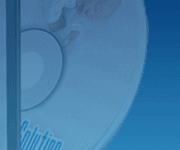Even if you have fibroids, the chance of delivering a healthy baby is high. Learn how fibroids can affect pregnancy from medical experts and two women who had fibroids and birthed healthy babies.
They can be microscopic, the size of a grapefruit, and even grow to volleyball proportion or beyond. These unwelcome guests call a woman's uterus home. We are talking about tumors of the muscle of the uterus, commonly known as fibroids.
The good news is that with the monitoring modern technology enables, the great majority of pregnant women who have fibroids give birth to healthy babies, says Dr. Pedro Arrabal, MD, a Baltimore OB-GYN and maternal fetal medicine specialist.
According to Dr. Bobbie Gostout, MD, an associate professor of obstetrics and gynecology with the Mayo Clinic in Rochester, Minnesota, fibroids infrequently cause difficulty with conception. Yet once a woman is pregnant, fibroids can enlarge rapidly—especially during early pregnancy—cause severe pain, and even necessitate hospitalization, Dr. Gostout explains. Still, she says most fibroids do not cause any difficulties with pregnancy.
Nevadra Johnson, of the Washington DC area, was about to undergo surgery to remove her fibroids when she learned she was pregnant with her second child. "It was kind of bittersweet. You're excited about it. You're also worried," she says of the news. "You're saying, 'Will the baby make it?' There's a lot of worry in the beginning stages of pregnancy. It's even more so when you know you have a condition."
Fibroids and the Growing Fetus
Johnson, who was referred to Dr. Arrabal, learned that for the safety of her unborn child, her surgery needed to be postponed until after delivery.
"During pregnancy, fibroids are not treated," explains Dr. Gostout. "We simply try to manage the symptoms in a woman who wishes to preserve fertility." After pregnancy, she says fibroids can be surgically removed through a myomectomy and adds while there are newer treatments which appear promising, so far they have only been applied in large numbers to women who are done having children, "mainly since the unknown effects on the strength of the uterus and the ability of the uterus to carry a healthy pregnancy."
When Johnson's fibroids were first discovered in 2000, she had a five-year-old son, but in early 2006, pregnant with her second child, her three fibroids ballooned from the size of a quarter to grapefruit size. At three-months pregnant, Johnson says her protruding stomach made her look twice as far along.
Johnson admits wondering if the fibroids were cancer. The answer was no. Dr. Arrabal says that the odds of developing cancer as a result of fibroids during pregnancy are less than one percent.
"Whenever we tell anybody things are out of the ordinary, people tend to assume the worst. The way I look at it, it's my job to assume the worst and to try to prevent the worst," says Dr. Arrabal, who asks patients to leave the worrying to him and to stay as positive as possible.
He explains as a woman's estrogen levels significantly rise during early pregnancy, fibroids can grow tenfold or more. The traditional method of measuring a mother's abdomen to determine a baby's approximate size can give a false sense of security, as the fibroids can throw off the numbers. Thanks to major medical advances in the last 30 years, Dr. Arrabal says the baby and the fibroids can be monitored in ways never before possible. Ultrasounds and other tests are used to track the baby's size and the location of the fibroids.
While Dr. Arrabal emphasizes the favorable odds, he also prepares patients for potential complications, such as an obstructed birth canal necessitating a Cesarean section, preterm contractions, and preterm labor. In a minority of cases, the fibroid settles under the placenta, forcing it to separate from the uterus, which Dr. Arrabal says can cause a woman to hemorrhage or have a stillbirth.
for more info, see entire article at www.babyzone.com/pregnancy/health_wellness/complications
Subscribe to:
Post Comments (Atom)






No comments:
Post a Comment